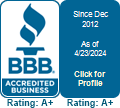
“Company culture” is more than a buzzword. It’s an essential part of any successful business’s growth strategy. Learning how to improve company culture can increase employee engagement, morale and retention. But before you can improve your culture, you need to identify it.
Determining your company culture type is the first step to building a positive workplace that employees are proud to be a part of – and that benefits your bottom line. Here’s how to figure out where your business stands, and the best ways to improve each type of culture.
The Four Company Culture Types
The Organizational Culture Assessment Instrument (OCAI) has four company culture categories: create, collaborate, control and compete. These company culture types are based on two criteria: Whether the company is more internally or externally oriented, and whether the company is more flexible or more stable in responding to change.
Companies that are more internally focused have high levels of collaboration, creativity and communication, while companies that are externally focused have strong sales and marketing, customer service and competitive focus. Of course, both internal and external focus is necessary for any business to succeed. But the focus your organization leans toward says a lot about your company culture type.
Creative Culture
Also called adhocracy culture because of its “ad hoc,” flexible nature, this type of company culture is resourceful, agile and innovative. Employees are encouraged to take risks, propose new ideas and even fail occasionally, as long as a lesson is learned. Leaders are inspirational visionaries who value freedom of thought and handle change and uncertainty well. In fact, change is the goal of creative cultures: bringing a new product or idea to market is the ultimate success. The best example of creative cultures are businesses in the tech industry, like Facebook and Google.
Collaborative Culture
Collaborative company culture types feel like “family.” Sometimes called clan culture, they’re all about tradition, loyalty and recognizing teamwork. Employees’ commitment and engagement is highly valued, and they’re encouraged to develop their skills and contribute to many different parts of the organization. Leaders are considered mentors and work on building consensus, rather than dictating plans. The best examples of collaborative culture occur at nonprofit organizations and in the education and healthcare industries.
Control Culture
Control cultures are the traditional “top-down” business model, also called the hierarchy culture. These types of organizations are very structured, and they value processes, logic and structure. Employees are expected to follow the rules, make decisions carefully and pay attention to detail. Leaders focus on coordinating the team and improving efficiency and reliability. This type of company culture is often seen in government and military as well as industries where safety is required, like nuclear power or aviation.
Compete Culture
Compete cultures, also called market cultures, got their name because they are competitive and results-driven. Employees are encouraged to make as much profit as possible, capture market share and beat other businesses in their field. Leaders are demanding and directive with high expectations. You might think these organizations need to learn how to improve company culture, but this culture type can actually work for the sales and marketing, consulting and finance industries.
Which Company Culture Type Are You?
Do any of these company culture types seem familiar to you? You may be able to pick out your own company culture instantly. But what if you’re still not sure? You can conduct a culture audit to determine your company’s culture.
- Look at your marketing materials: What company traits do you promote to others? Your marketing materials will identify what you think differentiates you from others – and that can reveal your company culture.
- Review your mission statement: What types of words do you use in your mission statement? Are you aspirational, visionary, competitive? Your mission statement reveals what you value as a company, and that informs your culture.
- Survey your employees: What do your employees think about your company culture? Sometimes the easiest way to get answers is to go to the source – your workforce.
Use the following framework to develop questions to ask yourself and others as you conduct your company culture audit. If you fall more on the left side, you’re probably either a control or compete culture. If you fall more on the right, you’re either a creative or collaborative culture.
|
Are You More… |
Or… |
|
Stable |
Flexible |
|
Externally focused |
Internally focused |
|
Independent |
Team-oriented |
|
Cautious |
Risk-taking |
|
Contemplative |
Action-oriented |
|
Professional |
Social |
How to Improve Company Culture
No matter what type of company culture an organization has, employee recognition programs provide a useful way to boost morale and reinforce company values. Here’s how you can use them for each company culture type:
- Creative: To promote a creative culture, employee recognition should focus on rewarding innovation, risk-taking and imagination. Art glass awards or customizable acrylic awards will add that personal touch that creative cultures crave. For activities, set up a “Wall of Fame” where recognition is posted, or give out experiential rewards, like theme park tickets or music lessons.
- Collaborative: Companies can use recognition awards that reward teamwork and years of service (which promote loyalty, a highly valued trait) to encourage a collaborative culture. Use activities like team outings and compliment boxes, where the team can drop kudos for each other to keep the collaborative culture strong.
- Control: Awards for leadership and safety promote the qualities that matter to control cultures. Achievement trophies come in a variety of shapes and sizes to fit any occasion. Reward programs work well in control cultures, too: Give on-the-spot recognition by handing out points or tokens for accomplishments, then let employees trade them in for company swag or prizes.
- Compete: To promote a culture of personal excellence, give awards like sales trophies and employee of the month plaques. Outside of awards, employees in complete cultures appreciate recognition like personal shout-outs in front of the company. You can also hold tournaments and themed competitions, like pumpkin carving or holiday baking, to encourage friendly competition.
Discovering how to improve company culture isn’t about taking your organization and making it into something it’s not. It’s about finding the company culture type that works with your industry and your business goals and using it to encourage a more positive workplace. When you become an expert on your own company culture, you can put in place programs that boost employee morale, encourage retention and ultimately lead to business success.


